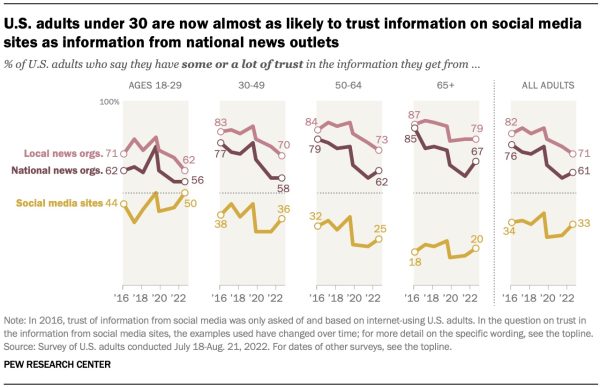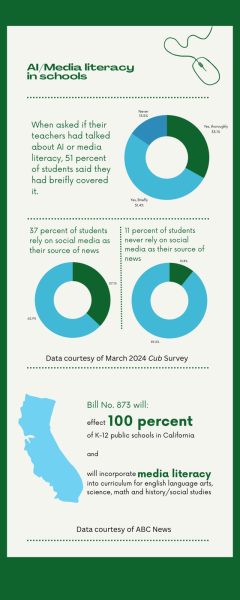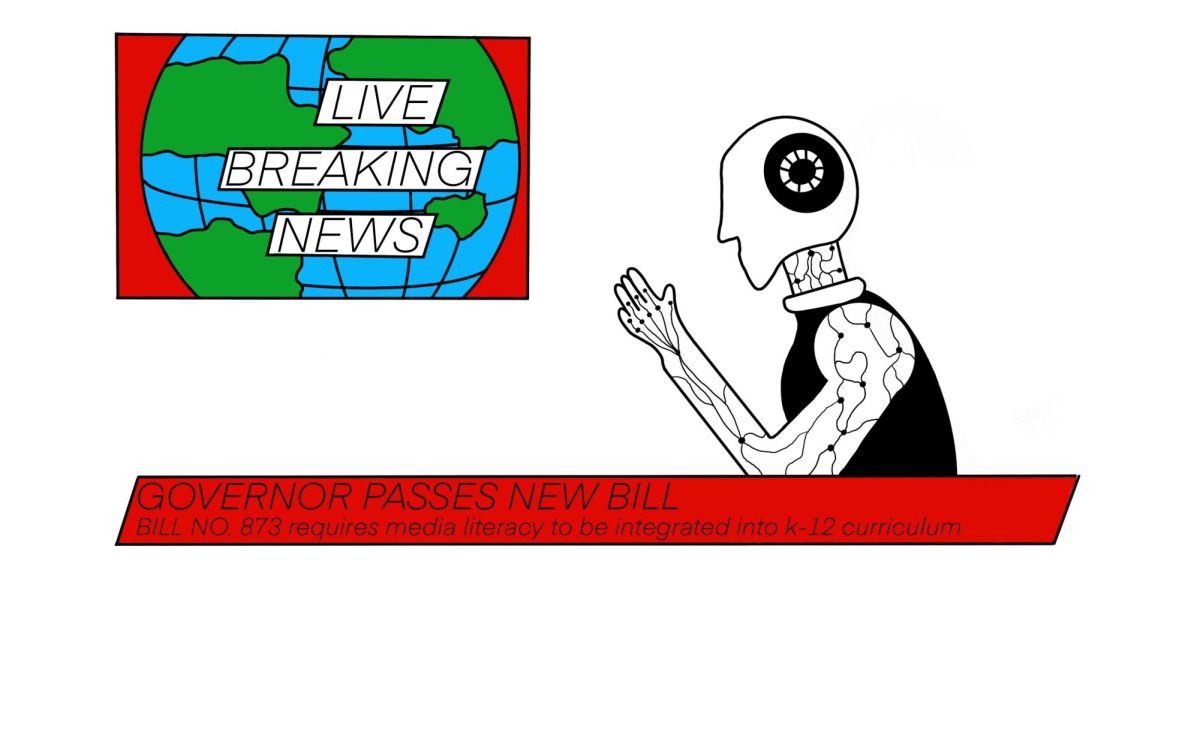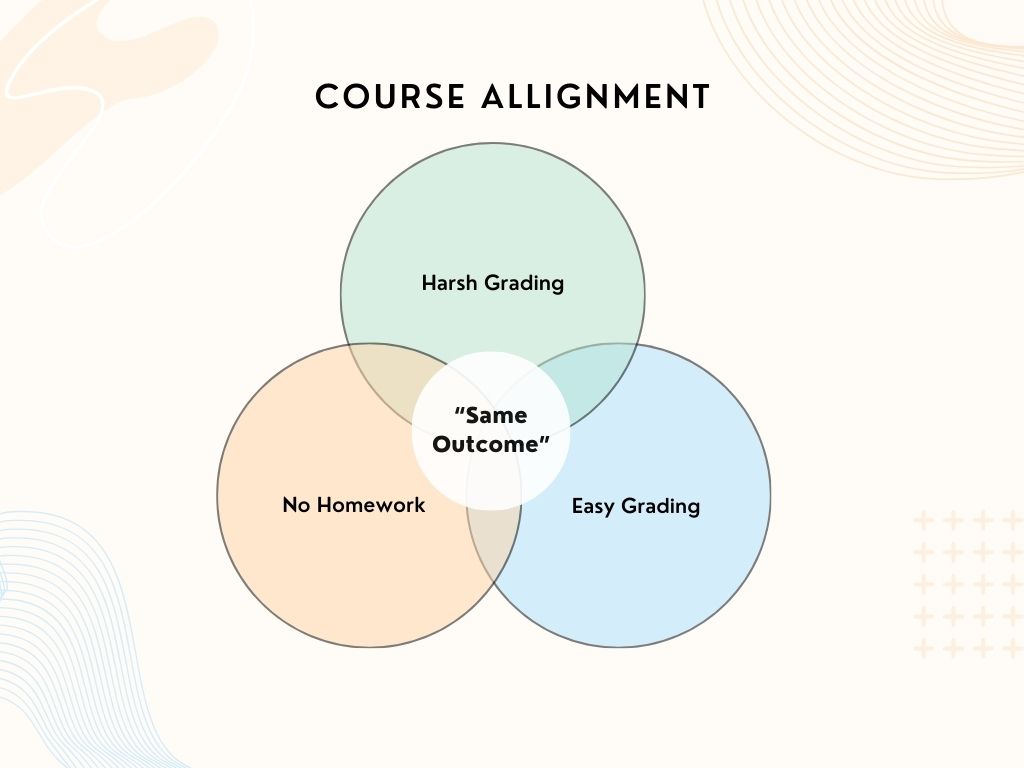At the beginning of 2024, a new media literacy bill went into effect that will impact every public school in California. It seeks to address the rapidly growing challenges schools face regarding Artificial intelligence (AI) usage and students’ ability to navigate valid news sources. The bill was signed by Governor Gavin Newsom in October of 2023 and titled Bill Number 873. The bill will focus on incorporating lessons on new media literacy content that must be integrated into K-12 mathematics, science and history-social science curricula. It will also focus on how to spot “fake news” and determine other misinformation. Media literacy education is increasingly critical for students in a time when technology is evolving exponentially. In addition, the prevalence of misinformation online and AI’s rapidly expanding impact on the content found there, including the growing challenge of “deep fakes” (convincingly altered videos or audio recordings created using advanced AI algorithms), contribute to the need for media literacy.

A 2022 Pew Research Center survey found that adults under 30 are nearly as likely to believe information on social media as they are from national news outlets. The research highlights how vulnerable young adults can be to misinformation online due to the fact that the prefrontal cortex, which controls decision-making and logical reasoning, is not fully developed until 25. Instead, the adolescent brain relies more on emotions to make decisions and can be particularly vulnerable to the types of strong, sensational headlines often shared via social platforms. This can cause things such as conspiracy theories to spread and gain traction.
Jennifer Ormsby, library services manager for the Los Angeles County Office of Education, gave an insight into the importance of media literacy, “The increase in Holocaust denial, climate change denial, other conspiracy theories getting a foothold, and now AI … all this shows how important media literacy is for our democracy right now.” Ormsby said.
According to a Bark survey conducted this March, 37 percent of students at Redwood rely solely on nontraditional sources such as social media for their news. This is unlike previous generations, who were able to rely on established media outlets with a staff of professional journalists and fact-checkers who required multiple sources of information before a story was published.
Another significant part of the bill will focus on teaching students the difference between an advertisement and news. Citing a study out of Stanford University, 82 percent of middle schoolers could not tell the difference between ads and news stories.
Mr. Butkevich, a social studies and world history teacher, had the insight to share his perspective on the usage of social media.
“I’ve noticed that more and more people, including adults, are getting their news from social media. This shift can lead individuals into rabbit holes of misinformation within a platform’s algorithm.” Butkevich said.
Despite the new bill, teachers at many schools, including Redwood, must decide how to implement these concepts within their own lesson plans.
“We haven’t had a single meeting or training about it,” Butkevitch said when asked about the school’s guidelines. This lack of formal guidance grants teachers autonomy to navigate the evolving AI landscape as they see fit.
“For my ninth graders, because I have [time in] the social issues class, I do a lot of media literacy [education] with them. I don’t do it with my 10th graders because there’s no time and space. So if it were supposed to be part of every single social studies class, I don’t think that I’d be for that, because the legislature passes a new bill every year.” Butkevich said.

AI is now another part of media literacy that can be utilized as an informational source in the classroom. According to a recent national survey commissioned by the Walton Family Foundation, 51 percent of educators and 33 percent of students from ages 12 to 17 used ChatGPT for school during the 2022–23 academic year.
Mr. Butkevich takes advantage of the up-and-coming technology for himself and his students.
“I do encourage students to use it as a starting point for research or if they have questions that come up during their research, but you can’t cite AI currently right now,” said Butkevich.
As false news continues to spread online and AI becomes more prevalent, teenagers need to take steps to check how reliable a source is. One key indicator of reliable journalism is a balanced approach to the issue being examined, not just a one-sided argument. It also helps to learn the hallmarks of left-leaning, right-leaning or balanced news sources. The most unbiased news generally comes from a central, balanced outlet with multiple sources and quotes. Another way teens can tell if a news article is biased is by scanning for inflammatory, slanted language. It helps to approach all online news, no matter what the source, with a critical eye, and perhaps even to take the time to check facts that seem false. Media literacy skills can be developed and honed over time, like any other skill.
As California schools adapt to the new mandate of integrating media literacy into the curriculum, educators will help equip students with the skills to navigate the digital world responsibly and spot false news. With AI playing an increasingly prominent role in education, educators must stay informed and proactive in integrating these technologies into their teaching practices. The journey towards media literacy in schools is not just about understanding AI and media; it’s also about empowering students to be discerning, critical thinkers in an age when they are inundated with misinformation.


















